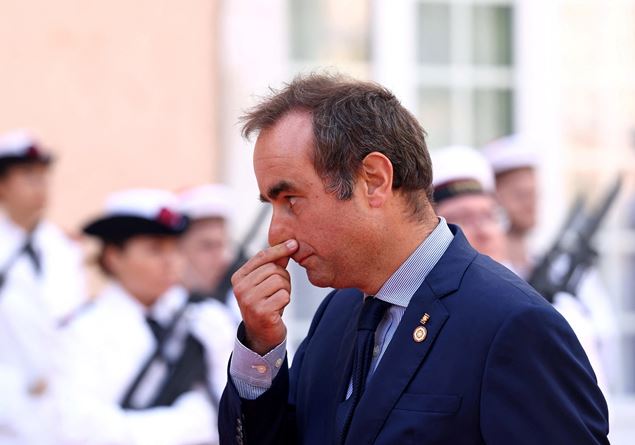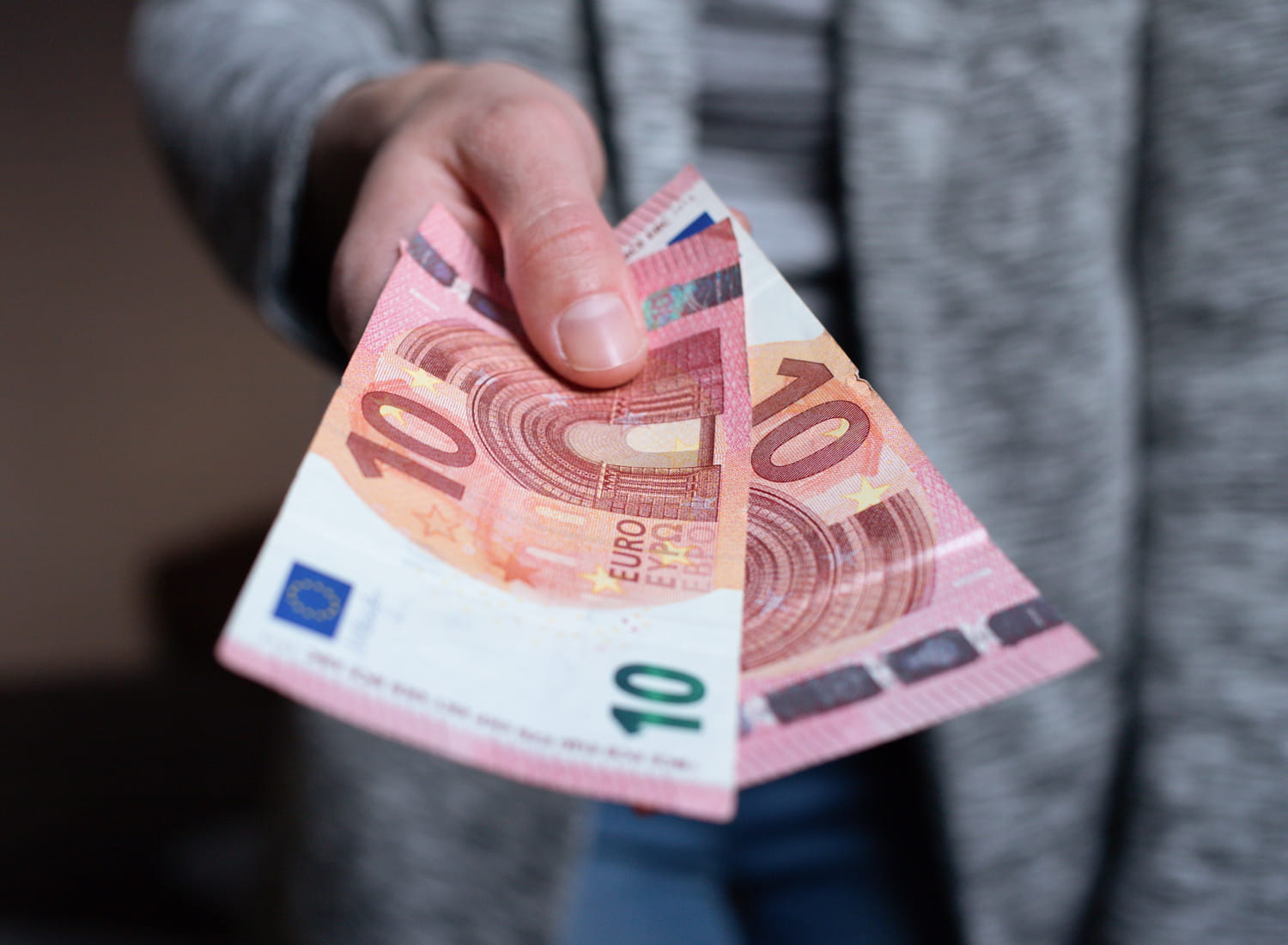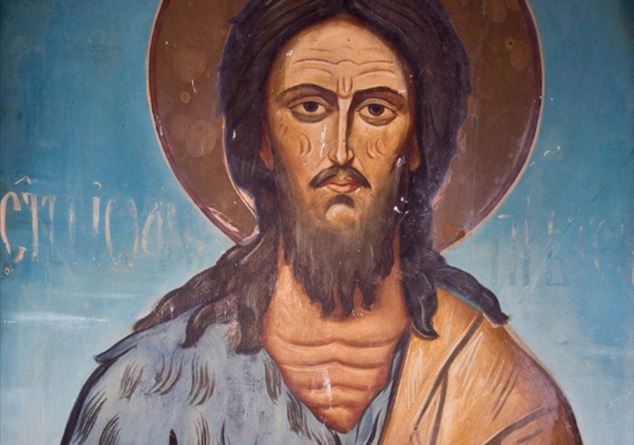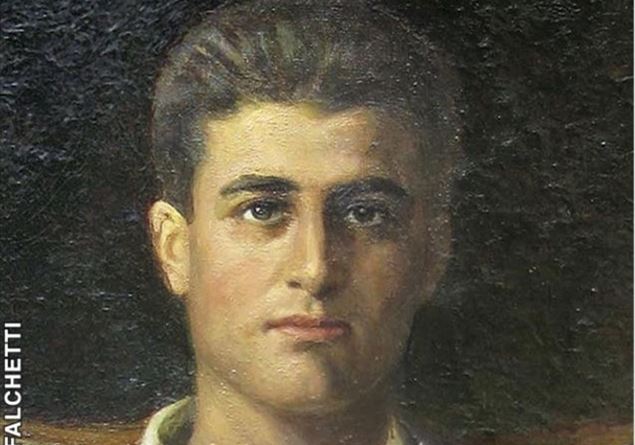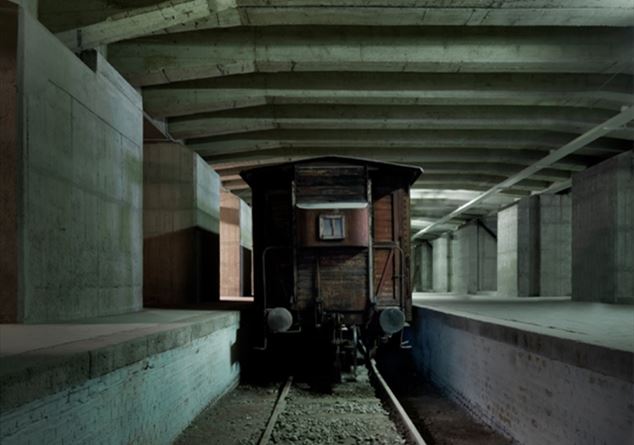Giovanni Battista is the only saint, together with the Virgin Maryof which the day of earthly birth is celebrated (June 24), in addition to that of Martyrdom (29 August).
Between the two dates, however, the most used for veneration is the first. Is patron of the monksbaptized Jesus in the waters of the Jordan river, died martyred and is called the “precursor” because he announced the coming of Christ. Famous the episode in which He prevailed with joy in the mother’s womb, Elisabettawhen he received Mary’s visit.
Who was Giovanni the Baptist?
It is theLast prophet of the Old Testament And the first apostle of Jesus, because he made him testimony to him still alive. In the Gospel of Luca (1, 5) it is said that he was born in a priestly family, his father Zaccaria was of the class of Abia and his mother Elizabeth, descended from Aaron.
Artemisia Gentileschi, birth of San Giovanni Battista, 1635
The “miraculous” birth announced by the angel Gabriele
The mother Elizabeth It was sterile and now elderly. One day, while the husband Zaccaria He offered the incense in the temple, the archangel Gabriele appeared to him who said to him: “Do not fear Zaccaria, your prayer has been fulfilled and your wife Elizabeth will give you a child you will call John. You will have joy and exultation and many will rejoice in his birth, since he will be great in front of the Lord” and continuing to describe his virtues, that is, full of the Holy Spirit, conversion operator in Israel. Lord with Elia’s spirit and strength.
After that vision, Elisabetta conceived a son between the wonder of relatives and acquaintances; In the sixth month of his pregnancy, the archangel Gabriele, the “heavenly messenger”, was sent by God to Nazareth to announce to Mary the motherhood of Christ: “The Holy Spirit will go down to you, on you the power of the Most High will spread his shadow. He who will be born will therefore be holy and called the Son of God. See also Elisabetta, your relative, in old age he conceived a sixth month and this is the sixth month. sterile; nothing is nothing impossible for God ”.
Mary then went to the cousin Elisabetta to visit her and to her greeting, he declaimed the beautiful song of the “Magnificat”, For the wonders that God was operating for the salvation of humanity and while Elisabetta exultant blessed her, even the son he carried on his womb, led to joy. When Giovanni was born, his father Zaccaria who had become silent for his disbelief at Gabriele’s announcement, he regained his voice, the birth took place to Ain Karim, About seven km west of Jerusalem, a city that boasts this tradition dating back to the VI century, with two sanctuaries dedicated to visiting and the Nativity.
Why is the “precursor” called?
Because with the prophetic action and preaching announces the coming of Jesus. After his youth, John retired to conduct the hard life of the ascetic in the desert, brought a dressed in camel hair and a leather belt around the hips; His food was locust and wild honey. In the year fifteenth of the Tiberius Empire (28-29 AD), He began his mission along the Giordano river, with the announcement of the advent of the now close messianic kingdom, urged the conversion and preached penance.
From all of Judea, from Jerusalem and from all over the region around the Giordano, he ran to listen to him so many people considering him a prophet; and Giovanni as a sign of purification from sins and birth to new life, immersed in the waters of the Jordan, those who welcomed his word, That is, he gave a baptism of repentance for the remission of sins, hence the name of Battista who was given to him.
Also the soldiers of the King Herod Antipa, They went to him to ask him what they could do if their profession was so unfortunate and gnked by the population; And he replied: “Do not mistreat and do not extort anything to anyone and contend for your wages” (Lk 3, 13).
Many began to think that he was the much -awaited messiah, but Giovanni assured them that they were only the precursor: “I baptize you with water for the conversion, but the one who comes after me is more powerful than me and I am not even worthy of dissolving the bay of sandals; he will baptize you in the Holy Spirit and fire”.
And to the official delegation, sent to him by the high priests he said, that he was not at all the Messiah, who was already in the midst of them, but they did not know him; Adding “I am the voice of one who shouts in the desert: prepare the way of the Lord, as the prophet Isaiah said”.
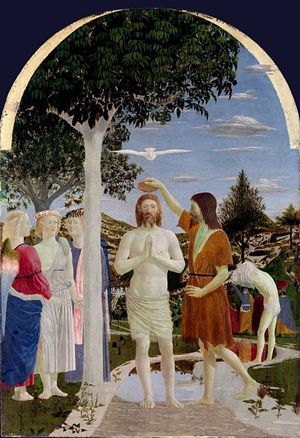
Piero della Francesca, Baptism of Christ, 1445
The baptism of Jesus in the Jordan
Jesus also presented himself to the Jordan to be baptized and John when he saw him in front of him he said: “Here is the lamb of God, here is the one who takes away the sin from the world! “ and Jesus: “I need to be baptized by you and you come to me?” And Jesus: “Leave to do for now, since it is convenient that we fulfill all justice”.
Then Giovanni agreed and baptized him and saw the Holy Spirit go down to him like a dove, while a voice said: “This is my favorite son in whom I pleased myself”. From that moment Giovanni confided to his disciples “Now my joy is complete. He must grow and I instead decrease” (Jn 3, 29-30).
His mission was accomplished, because Jesus began to start his preaching, had formed the group of the apostles and disciples and was followed by a great crowd; He had preached precisely for this reason, preparing a worthy people, who welcomed Jesus and his message of redemption.
The contrast with the king of Israel Herod Antipa
He had worked without backing up in front of anything, not even in front of the king of Israel Erode Antipa († 40 AD), who had taken the beauty with him Herodiade, wife divorced by his brother; This was not possible according to the Jewish law because the marriage had been regular and fruitful, so much so that a Salomè daughter was born.
For this reason, an observant and rigorous Jew as John felt the duty to protest towards the king for his conduct. Infuriate Herodiade brought him grudge, but he was not the only one; Because the baptism that John administered, forgiven the sins, thus making the sacrifices expiatory so useless, who at that time were made in the temple, and this was not welcome to the Jewish priests.

Caravaggio, Decollation of San Giovanni Battista, 1608
The beheading and the head brought to a tray
Herod arrested and put Giovanni in prison on the instigation of Herodiade, who would have liked to be killed, but but Herod Antipa feared Giovanni, considering him the right and holy man, he preferred to supervise him and listened to her willingly, even if it remained very troubled.
But for Herodiade came the favorable day, when the king gave a banquet to celebrate his birthday, inviting the whole court and the notables of the Galilee. In the feast, Solomè, the daughter of Herodiade and therefore nephew of Herod Antipa, also participated in the party with a disturbing dance; His performance liked the king and diners a lot, so he said to the girl: “Ask me anything and I will give you”; Salomé asked his mother for advice and Herodiade took the ball, and told her to ask for the head of the Baptist.
To this request made to him by the girl in front of everyone, Herod was saddened by it, but for the oath made publicly, he did not want to refuse and ordered the guards who had brought Giovanni’s head, who was in the prisons of the palace.
The Baptist was beheaded and his head was brought to a tray and given to the girl who gave her to the mother. His disciples learned of martyrdom, they came to recover the body, laying it in a sepulcher; The killing aroused horror and increased the fame of the Baptist.
Why is it celebrated on June 24?
Being the birth of Jesus set to December 25th, John’s one had to be celebrated six months earlier, According to what the archangel Gabriele advertised to Maria announced.
What does his name mean?
Giovanni among the male names, but also used in female derivations (Giovanna, Gianna) is the most widespread in the world, translated into the various languages; And many other saints, blessed, venerable of the Church, originally brought his name; Like, moreover, the almost contemporary St. John the evangelist and apostle, because the name Giovanni, at his time was already known and in the Hebrew Iehóhananmeant: “God is propitious”.
Which churches hold its relics?
St. John the Baptist, just to name a few, is patron of cities such as Turin, Florence, Genoa, Ragusa … As for relics, the story is somewhat long and complex. After being buried without the garment to Sebaste In Samaria, where two churches arose in his honor; In 361-362 at the time of the emperor Giuliano the apostate, his sepulcher was profaned by the pagans who burned the body dispersing the ashes.
But a Genoa in the cathedral of San Lorenzo, those ashes are venerated, brought from the East in 1098, at the time of the crusades, with all the connected doubts.
For the head that was located a Constantinople, For some instead ad Emesa, Unfortunately, as for many relics of the period of the crusades, where he was competing to bring holy and important relics to the West, his head was split, one in Rome in the twelfth century and another to Amiens in the thirteenth century.
In Rome he is guarded without the jaw in the church of San Silvestro in Capite, while the Cathedral of San Lorenzo di Viterbo, would keep the sacred chin.
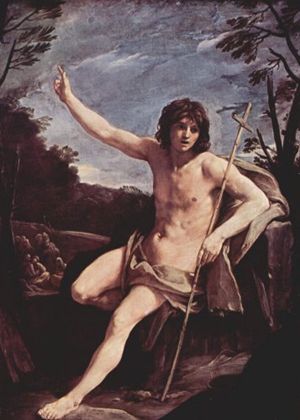
Guido Reni (1575 – 1642), San Giovanni Battista in the desert, approx. 1640
His figure in the history of art
Giovanni Battista is the most depicted saint in the art of all centuries; There is no one can say, altarpiece or group framework of saints, alone or around the throne of the Virgin Mary, that this saint is not present, usually covered with an animal skin and holding a cross -shaped stick.
Not to mention the many pictorial works of the greatest artists such as Raffaello, Leonardoetc. who depict him Child, who plays with the little Jesus, always covered with the egg skin and affectionately called “San Giovannino”.
This testifies to the great interest, which in all eras has aroused this austere prophet, so high in the same consideration of Christ, as to be called “the greatest of women’s births”.

